I’ve seen something odd on the brass handles of some of my copper pots.
If you look closely at the photos below, you can see “wrinkles” in the handles — fine lines that trace the contours of the baseplate. On some handles the wrinkles have picked up a little grime and you can see them as fine black lines, but in others you have to look really closely. They are just on the surface — they’re not cracks or structural damage — and they feel just like little wrinkles.
(The photos below are borrowed from my post on handles, so the captions refer to those measurements.)

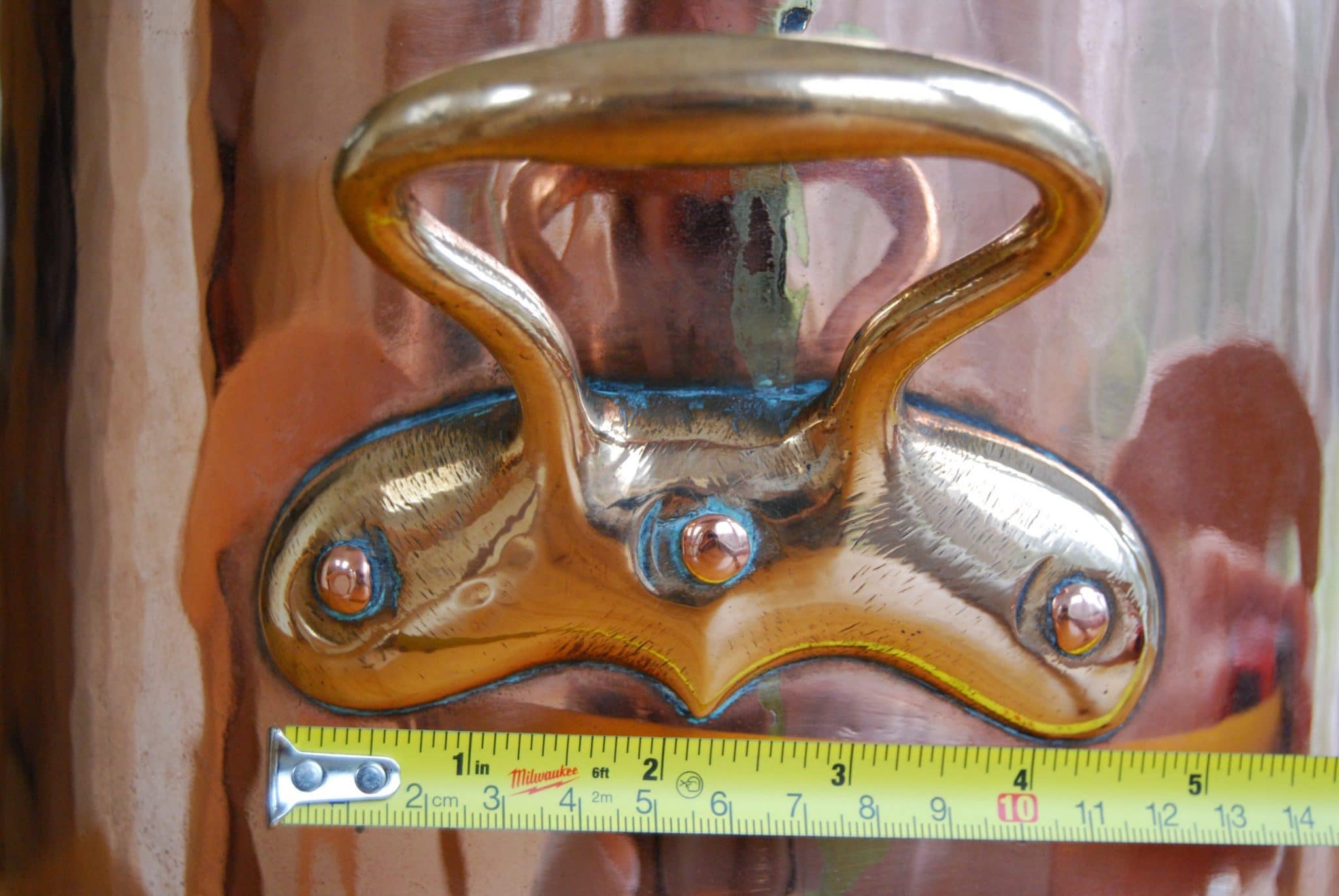
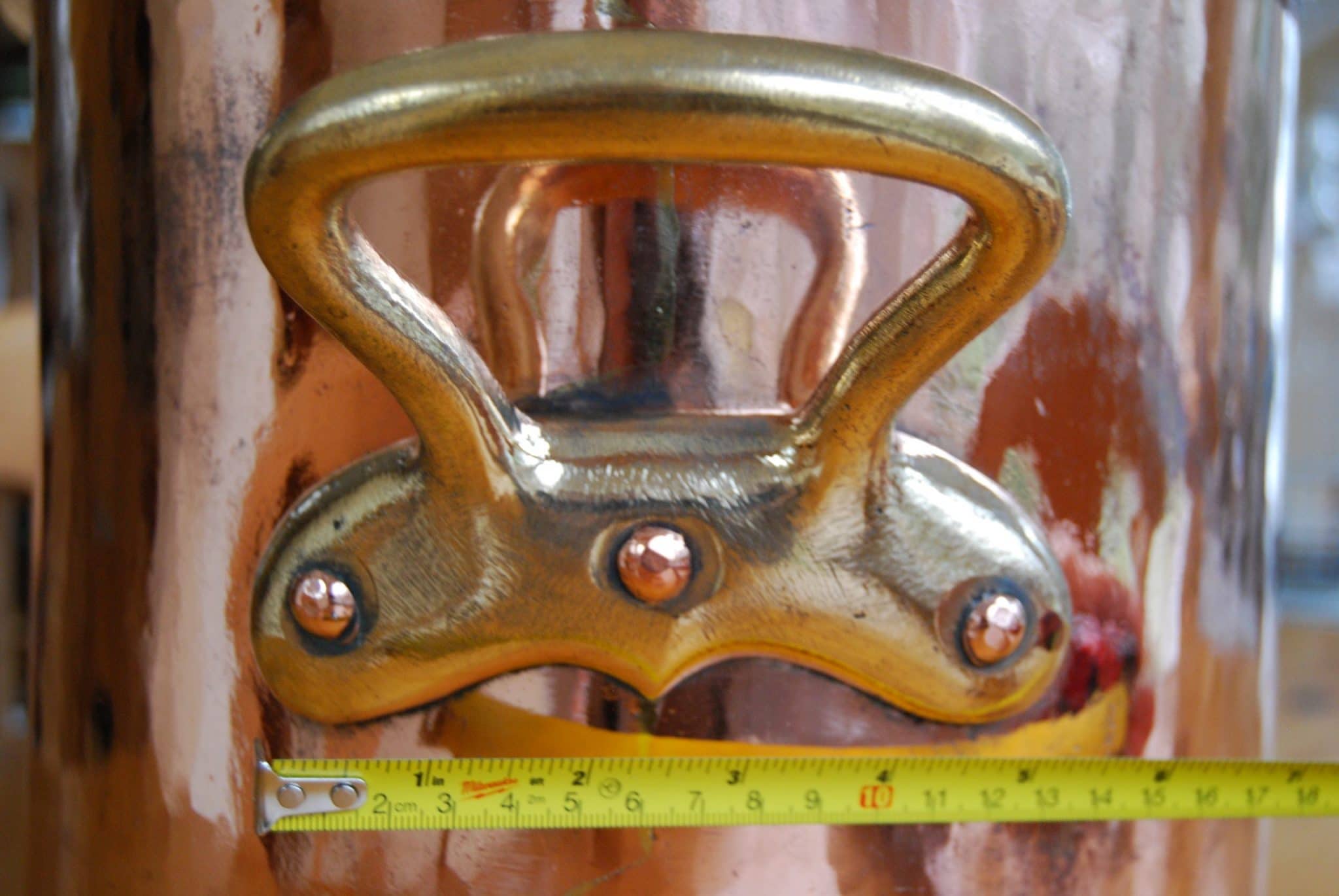


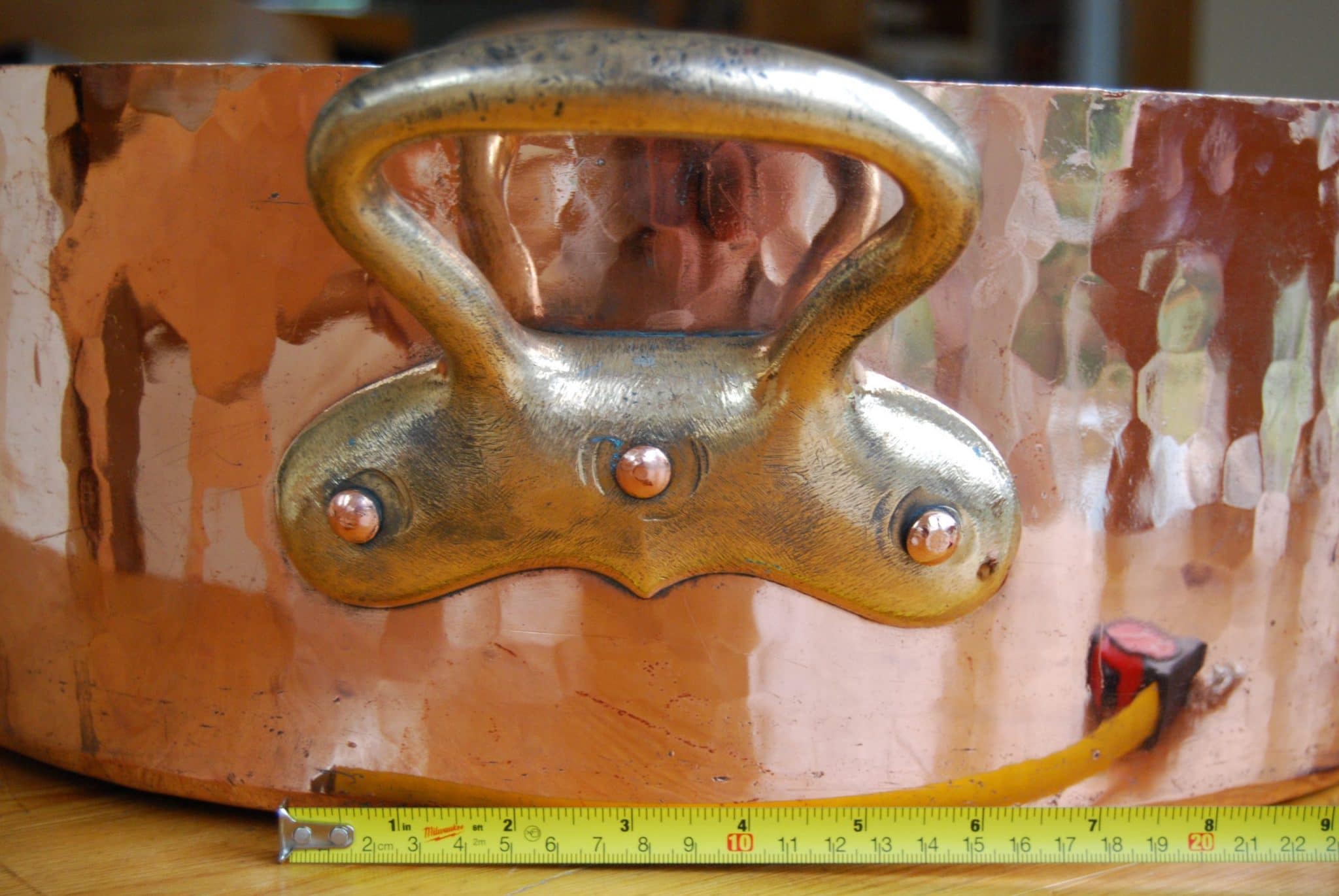

I’ve been trying to figure out what can cause it and I have two competing theories.
One theory is that these are marks from the polishing step in the manufacturing process. Brass handles are cast, and when they come out of the cast they have a rough surface and must be polished to create a shiny finish. These “wrinkles” are marks from filing and sanding the brass.
Another theory is that these are stress marks from the metal compressing slightly from the weight of the pan. Brass is an alloy of copper and zinc and its relatively high malleability makes it easy to shape, but also means it could deform slowly over years if subjected to stress, such as the weight of a heavy pan.
I’m trying to find a metallurgist to answer this question, but in the meantime, what do you think? File marks, or stress marks?
Update: TJFRANCE tells me that these marks are from filing or sanding the handles. In his own words:
Regarding the wrinkles on the bronze handles. We must not look for great theories. You have to work on the product to know. In reality, traces are left in general by the metal brush that turns on the drum. It can happen to have to clean very black handles and very charred. Have known that if we use the electric brush we will leave traces that we can not remove. Yet we do it anyway because the dirty is too important. Then when we will polish the copper we will also polish the handle. There will always remain places where the polishing brush will not go properly, so the traces of the electric brush remains apparent. Then obviously the traces are different in depth depending on the brush used, the machine, the worker, if the handle remained on the pot, if it was removed before cleaning, etc …
Thank you, TJFRANCE!
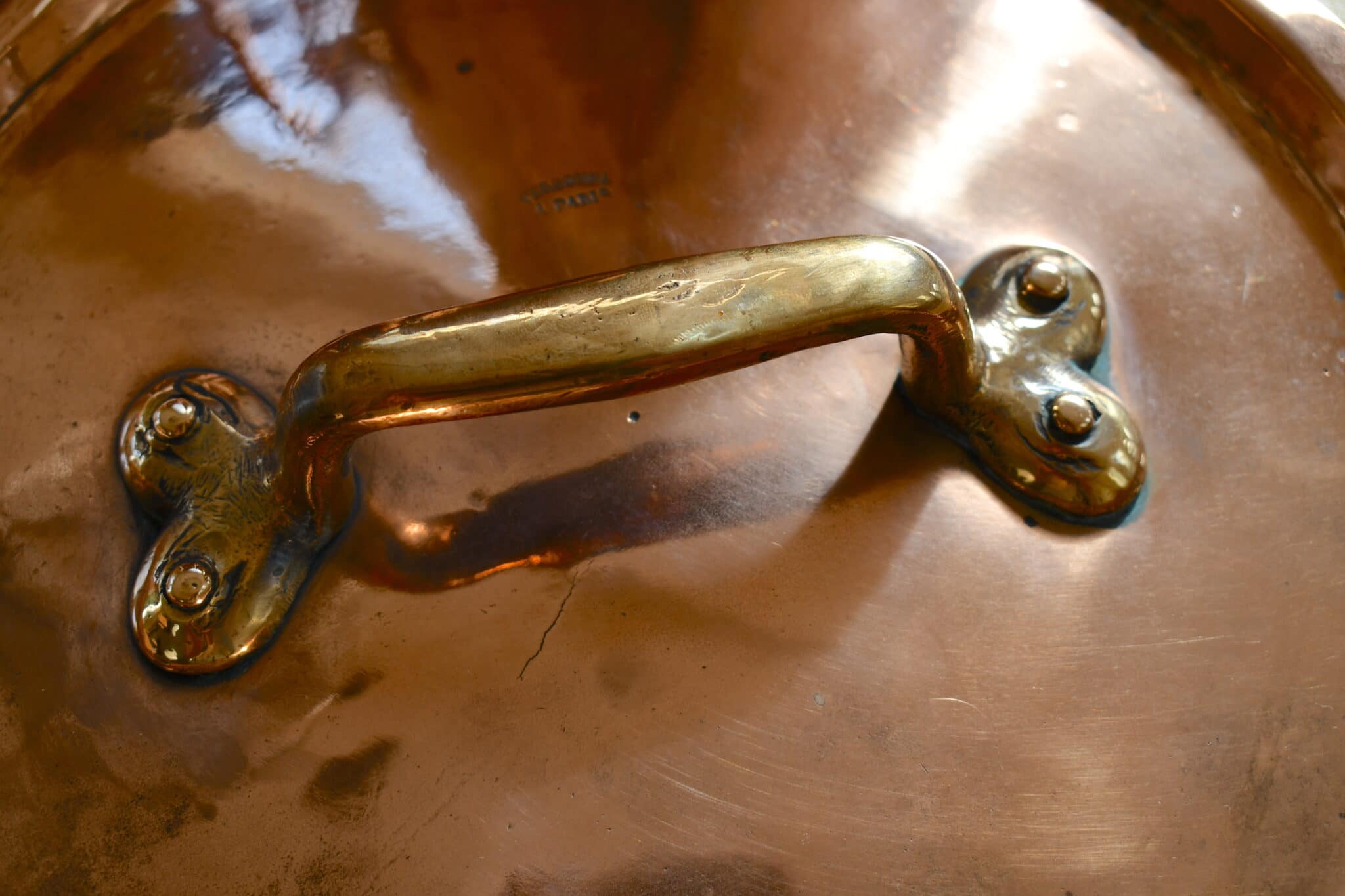

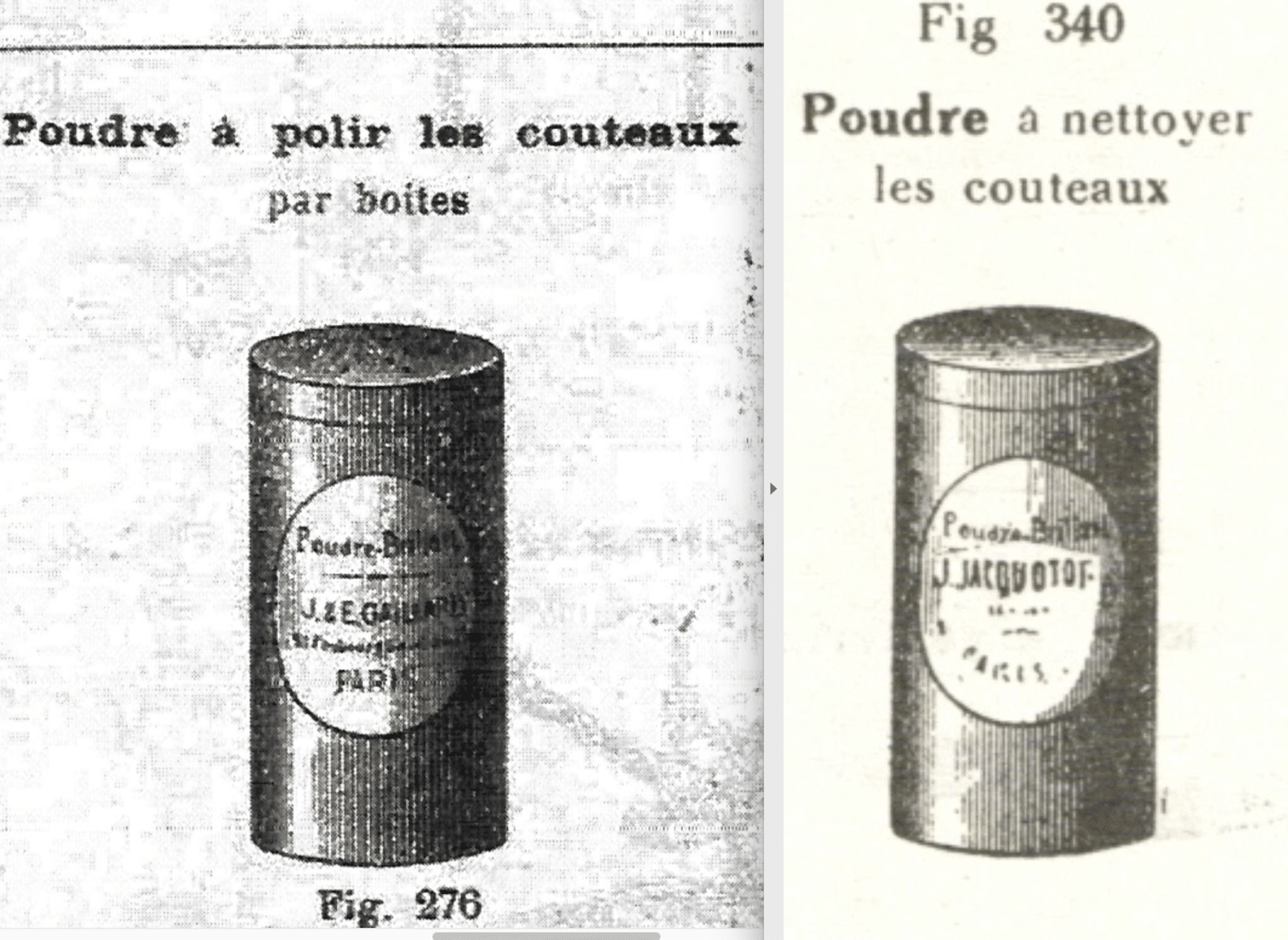
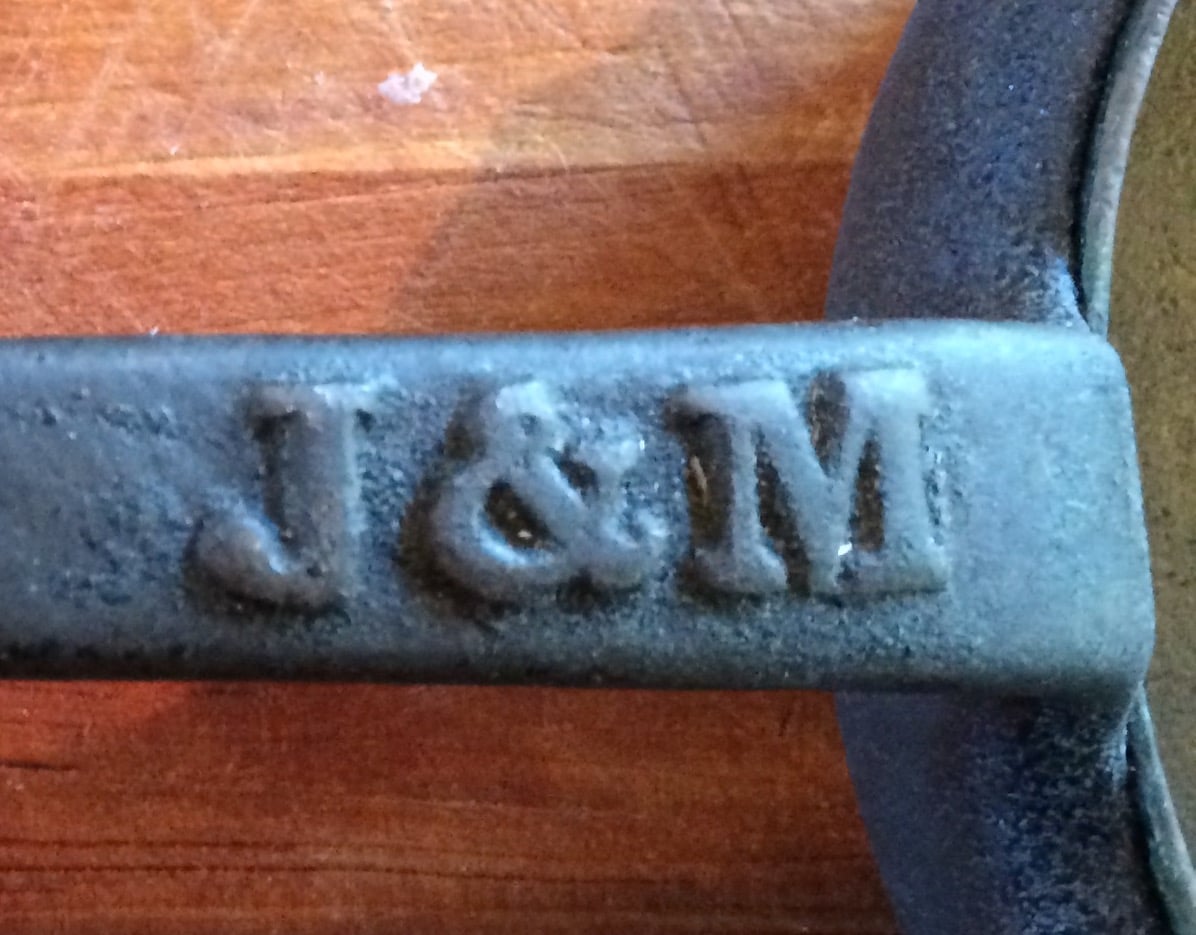

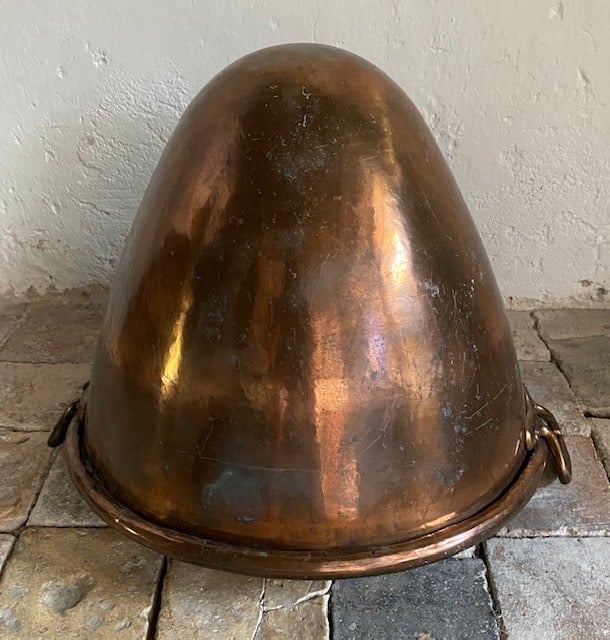
I’m wondering if there is a third option at work: namely, corrosion of the brass handles with age. The following quote is from a website devoted to boatbuilding, where brass is often used in many applications:
“Because many brass alloys contain a substantial amount of zinc, they are especially susceptible to “dezincification,” whereby the zinc selectively corrodes and leaves a porous copper shell that retains its shape but has little strength.”
That’s a very interesting idea. I took a look at some photos of dezincified brass and it’s like the zinc has melted away leaving the copper behind. But these “wrinkles” are very ordered compared to the organically spreading corrosion pattern of dezincification, and there’s no color or texture change I can see around the wrinkles. Hmmmm.
And after I left that quote from the boatbuilding site, I began to wonder if perhaps the presence of salt water could be the catalyst for the dezincification rather than the wear and tear of cooking and cleaning the copper pots. Thus the corrosive power of the salt water on brass pipes and fittings used “at sea” would result in the organically spreading corrosion and “melting away” of the zinc.